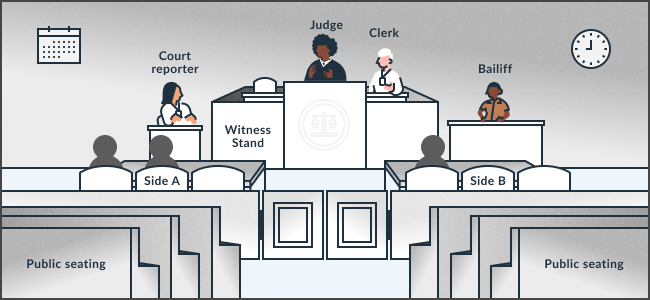Do you have a remote hearing? Get tips for what to expect if you have a remote hearing.
Be on time or early for court
Know in advance which department you need to go to and in which courthouse.
Leave enough time to:
- Find parking
- Walk to the courthouse
- Go through court security if there is any
- Find the courtroom and check-in with the bailiff or the court attendant

When your case is called
Go to the front of the courtroom when your case is called
- Bring all of your court papers with you and any other papers you may need to show the judge and other side to prove your case.
- Bring the list of what you plan to say. People often forget to say things they need to in court because they’re nervous or get distracted.
Tell the judge your side
If you're the landlord, you'll speak first because you started the case. You'll have a few minutes to tell the judge what you want and why. Other cases are scheduled for the same time as yours, so you'll only have a few minutes each time you talk.
Explain quickly:
- What the situation is
- What you want the judge to order
- Why
If you're the tenant, you'll get a turn to speak next. The judge may ask you questions.
Do not interrupt the other side or the judge. Answer politely when the other side or judge asks you a question.
You can take notes while the other side is speaking if you need to respond to something once it's your turn.
The judge has to follow the law when they make their decision. They can’t make a decision based simply on feelings of unfairness.
After you both speak the judge will make a decision
The judge may make a decision right away (a judgment) or may mail you their decision (take the case under submission).
The judge will write their decision on the Notice of Entry of Judgment (form SC-130 or form SC-200).
Be sure you understand the judge’s order. If you don’t understand what the order means, you can ask the judge to explain it.

